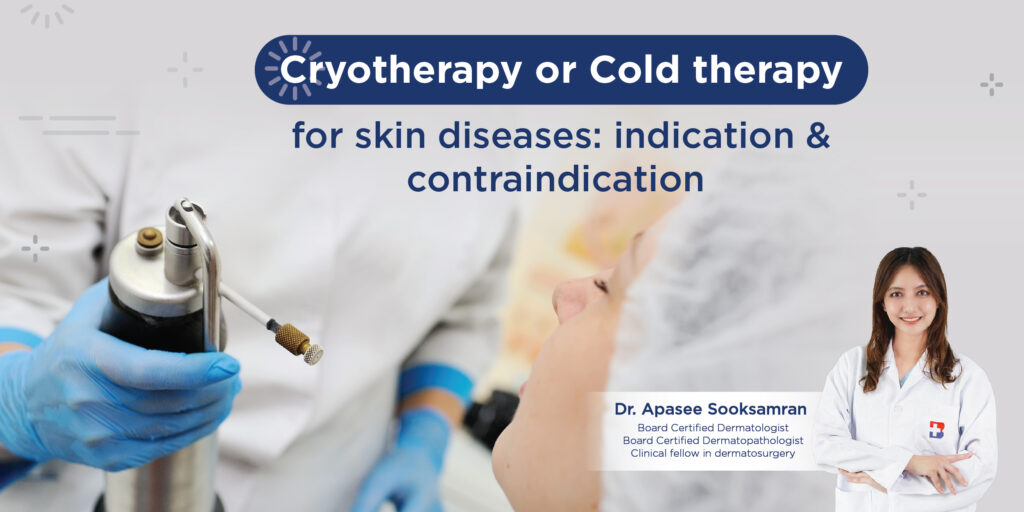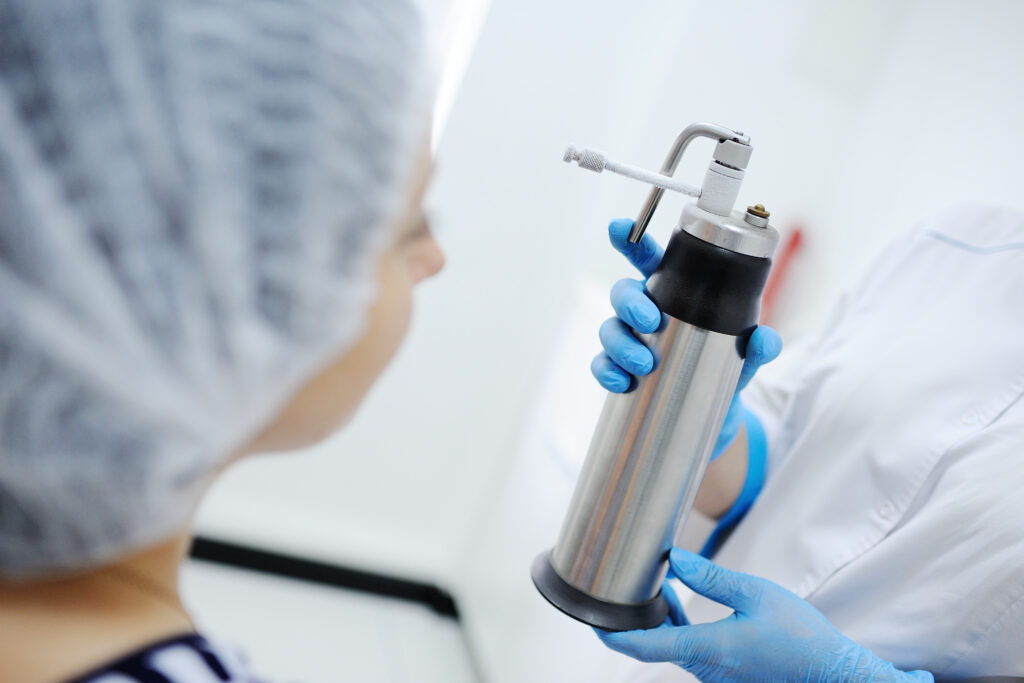
Cryosurgery is a highly effective treatment for a broad range of benign skin problems.
Cryosurgery (Liquid Nitrogen) indications
Benign conditions:
- Seborrheic keratosis
- Wart
- Skin tags
- Molluscum contagiosum
- Solar lentigo
- Hypertrophic/keloid scars.
Most of the entities can be treated with a single round of cryosurgery, but for larger or thicker lesions treatments can be repeated at 3 to 4-week intervals until the lesions have resolved. This is especially true in verruca which typically take anywhere from 2 to 6 treatments to resolve.

Pre-malignant conditions:
- Actinic keratosis
- Bowen’s disease
Malignant conditions :
- Basal cell carcinoma
- Non invasive squamous cell carcinoma.
- Lentigo maligna * variable efficacy and recurrence rates
*Please note that the treatment of malignant lesions with cryotherapy is not a first-line therapy and is typically reserved for patients who are not good candidates for excision. Large lesions that would be very disfiguring if excised or elderly patient who cannot tolerate excision are examples where cryosurgery may be indicated.
Contraindication
Cryosurgery should not be performed on a neoplasm of uncertain behavior and contraindications to cryosurgery generally are conditions that can be exacerbated by cold exposure such as cryoglobulinemia, multiple myeloma, Raynaud disease, cold urticaria, previous history of cold induce injury at the site or limb, as well as poor circulation at the site or in that limb.
Advantages of this treatment
- Short preparation time
- Low risk of infection
- Minimal wound care.
- No expensive supplies or injectable anesthesia
- Does not have to return for suture removal.
Mechanism of cryotherapy
Irreversible damage in treated tissue occurs because of intracellular ice formation. The degree of damage depends on the rate of cooling and the minimum temperature achieved. Inflammation develops during the 24 hours after treatment, further contributing to destruction of the lesion through immunologically mediated mechanisms. The dose of cryotherapy and the choice of delivery method depend on the size, tissue type, and depth of the lesion. Liquid nitrogen, boils at −196°C (−320.8°F), is the most effective cryogen for clinical use. Generally, destruction of benign lesions requires temperatures of −20°C to −30°C (−4°F to −22°F). Effective removal of malignant tissue often requires temperatures of −40°C (−40°F) to −50°C.
Complication
Most common complication is skin discomfort, generally a burning sensation, occurs with cryosurgery, but intensity is variable. The most sensitive areas are the fingertips, ears, and temples.
Treated sites will progress from erythema, edema, and vesiculation over the course of several days. Depending on the depth of the treatment an exudate may be noted up to 2 weeks after treatment.
Other complications of cryosurgery include dyspigmentation, alopecia, pseudoepitheliomatous hyperplasia, depressed scars, and tissue distortion (nail dystrophy or notching of cartilage).
Postcryotherapy recommendations
Generally, it is suggested to continue in dermatological follow-up, taking into account that on some occasions, it is necessary to repeat cryotherapy. Importantly, if days after the procedure, you have a fever (identified with a thermometer), chills, redness and heat at the wound site, or purulent material leakage, please contact Bangkok Phuket Hospital to take care of post procedural skin infection.
Ref:
Prohaska J, Jan AH. Cryotherapy in Dermatology. [Updated 2023 Sep 15]. In: StatPearls [Internet]. Treasure Island (FL): StatPearls Publishing; 2024 Jan-. Available from: https://www.ncbi.nlm.nih.gov/books/NBK482319/






